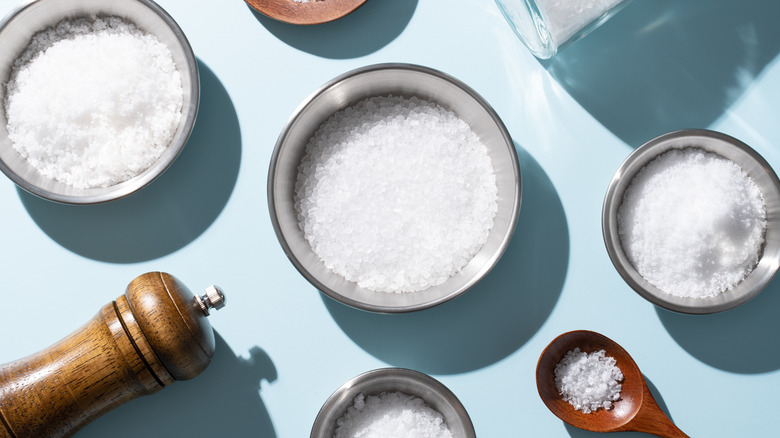Salt Isn't The Best Electrolyte Source: Here's Why
Salt and sodium aren't the same thing; in fact, salt contains sodium, an essential electrolyte that gives salt its rehydrating properties. It would seem, then, that consuming salt after a long workout or a hot day spent in the sun would be the best way to replenish your body's electrolytes — but it's actually not. The reason for this, as explained by our expert Sarah Schlichter — MPH, RDN, and owner of Nutrition for Running — is threefold.
"Plain salt can help with hydration, but it won't provide all of the electrolytes," she told Food Republic. She continued, explaining that when salt alone is consumed, it can't be absorbed by our bodies as efficiently as it can when combined with other electrolytes. Finally, Schlichter simply noted, "Plain salt may also not taste good on its own." It surely doesn't — and while you could dissolve some in water and drink that, it highlights the crucial role a full spectrum of electrolytes plays in proper hydration. You might instead consider ingesting salt in conjunction with other foods and beverages that contain electrolytes to more fully replenish the fluids in your body.
Fruits and veggies alone also aren't enough for rehydration
So, you've come to understand that relying solely on salt for electrolyte replenishment isn't ideal. And if you're now thinking, "That's fine, I'll just eat fruits and vegetables after a long run to boost my hydration," you might want to rethink that strategy as well. "Whole fruits and vegetables can offer electrolytes, like potassium and magnesium," Sarah Schlichter commented, but she explained they tend to lack sodium — the electrolyte most lost through sweating, and the one that requires the most replenishment.
Schlichter recommended pairing fruits and vegetables with a salty food. Because produce tends to be largely made of water and composed of different electrolytes, combining it with a sodium-rich food creates a hydration powerhouse of a snack. She shared a list of foods with natural electrolytes, including sweet potatoes — to which she suggested adding salt for sodium — as well as nuts and seeds, which you can buy salted, and squash, which you can roast, salt, and even top with salted butter. And lest we forget fruits, there are watermelon slices (a sprinkle of salt is a long-time Southern tradition for them!), bananas, and oranges, which you can salt-ify by eating them alongside a handful of pretzels, a half-cup of cottage cheese (also an undercover hydration booster), or — if you can withstand the flavor combination — a pickle spear or two.


